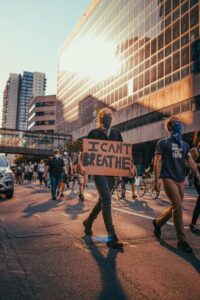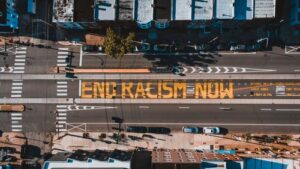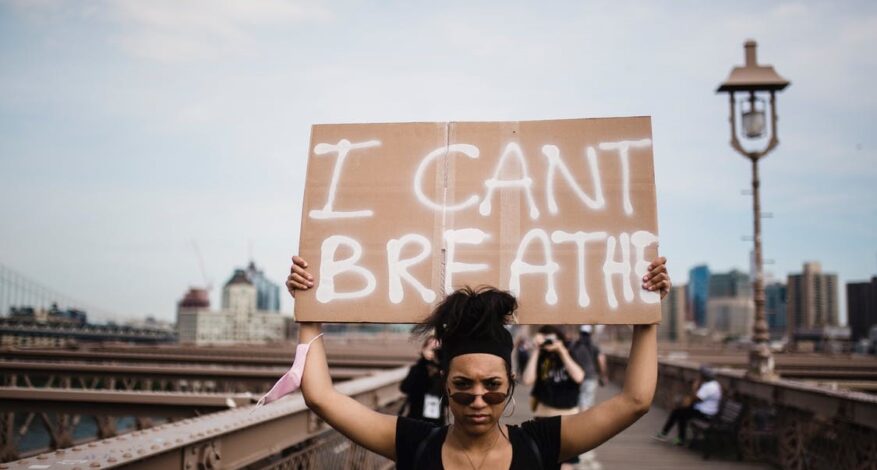THE POWER OF SOCIAL MOVEMENTS
There is no doubt that social movements played a significant role in building the kind of society we live in today.
Let’s, for example, think about women’s right to vote, which was obtained thanks to the “Women Suffrage’s Movement”. The study of social movements developed at an unprecedented pace in the 1980s. Social movements and protests, non-aligned with the major parties (neither left- nor right-wing) or trade unions, have become a constant element in the Western democracies.
 The construction of identity is an essential part of collective action. It enables the people involved in the same conflict to see themselves as connected by interests, values, common histories – or, otherwise, as divided by these same factors. It is not necessary that the group is homogeneous, in fact, the protagonists of these conflicts frequently identify themselves with heterogeneous collectives and they do not always see eye to eye about fundamental issues.
The construction of identity is an essential part of collective action. It enables the people involved in the same conflict to see themselves as connected by interests, values, common histories – or, otherwise, as divided by these same factors. It is not necessary that the group is homogeneous, in fact, the protagonists of these conflicts frequently identify themselves with heterogeneous collectives and they do not always see eye to eye about fundamental issues.
Social networks affect participation in collective actions, and, in turn, participation shapes networks, reinforcing pre-existing or creating new ones. Social networks may increase individuals’ chances to become involved, making the activists’’ attempts to increase the appeal of their causes more successful. Social networks are not only a facilitator but also a product of collective action: while people often become involved in a specific movement or campaign through their previous connections, their very participation also forges new ones.
Social movements can be a powerful tool towards social change
Social movements can shape the future of our society even if they are initially unsuccessful because they do affect public opinion. I also think that everyone, as a human being, has the right to express their option and exercise their rights peacefully and can actually do something to change things. Social movements play such an important role in bringing social change about in political, religious, educational, health, corporate, government, and other institutional arenas.
 The ingredients of a successful protest are organisation, engaged individuals, non-violence, and the sharing of a message. In this way, the protest will catch the attention of people who do not usually participate in such things, and, consequently, it will lead to better social changes.
The ingredients of a successful protest are organisation, engaged individuals, non-violence, and the sharing of a message. In this way, the protest will catch the attention of people who do not usually participate in such things, and, consequently, it will lead to better social changes.
In addition, it is important to consider the huge power of social networks as virtual places that connect and involve people in virtual protests with huge results. Personally, we think that the use of social media as a means for social movement protests will be the future. For sure, it is not devoid of risks, but it has the great power to cancel the issues related to big gatherings and to catch global attention in a short time.
There are different types of social movements; for instance, the Feminist, Civil rights, and Decolonization movements, or the movements for Migrants and refugees’ rights, against austerity, or for Climate change and social ecology.
When we talk about social movements, we often think of the “Civil Rights Movement” in the US, which managed to bring segregation to an end in this country. But there are many other examples: the “Apartheid”, and the way it ended, in South Africa, or the many feminist movements, such as “Ni una menos”, born in Argentina and then become a global phenomenon; to continue with the postcolonial movements and the movements against the colonial regimes in Africa and Asia. Another example is the “Metoo movement”, which caused the world to be bombarded with the #metoo hashtags, just 12 hours after Alyssa Milano had first tweeted it. The speed with which the #metoo hashtag spread globally suggests that new technologies can indeed play a role to help social movements in our ever-evolving world. The #metoo movement helped many people to share their experiences. Sexual assaults and harassment, in fact, often make the victims think that what happened was their fault, that the way they were dressed, their polite behaviour might have been mistaken for flirting and, therefore, feel guilty. The #metoo movement made people realise how common these traumatising experiences are and help the victims overcome their feelings of guilt and fears. In fact, when you understand you are not alone, you feel stronger, and not afraid of speaking out anymore.
Intersectionality
 It was only as of the third “feminist” wave that there was a conscious effort to include the multiple identities of feminism, thus considering age, race, class, religion, or sexual preferences. Movements started to get over these power structures and became more inclusive and intersectional. Of this, of course, there are many examples but what we recall is the 2017 Women’s March in Washington, when the organizers willingly tried to prioritize issues faced by non-white women. On that occasion, many women of color demonstrated in favor of racial equality and thousands of white women marched with them carrying placards to show their support to Black Lives Matter, Muslim Rights, etc. Of course, we cannot say that a single day of “intersectional activism” can eliminate the skepticism that some non-white women feel towards the movement. Therefore, we believe feminists should continue to show their solidarity for all the marginalized women to demonstrate that intersectionality was not a one-time thing.
It was only as of the third “feminist” wave that there was a conscious effort to include the multiple identities of feminism, thus considering age, race, class, religion, or sexual preferences. Movements started to get over these power structures and became more inclusive and intersectional. Of this, of course, there are many examples but what we recall is the 2017 Women’s March in Washington, when the organizers willingly tried to prioritize issues faced by non-white women. On that occasion, many women of color demonstrated in favor of racial equality and thousands of white women marched with them carrying placards to show their support to Black Lives Matter, Muslim Rights, etc. Of course, we cannot say that a single day of “intersectional activism” can eliminate the skepticism that some non-white women feel towards the movement. Therefore, we believe feminists should continue to show their solidarity for all the marginalized women to demonstrate that intersectionality was not a one-time thing.
We should add “intersectionality” to the list of ingredients that make a protest successful. Only if movements embrace inclusivity as part of their mission will it be possible for a broad societal change to occur.

